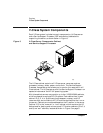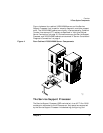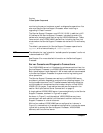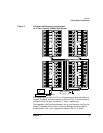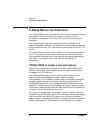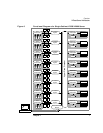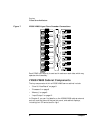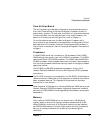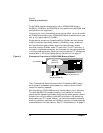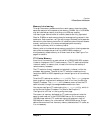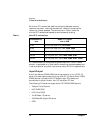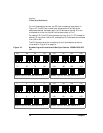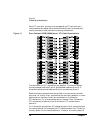
Chapter 1 9
Overview
V-Class Server Architecture
Core Utilities Board
The utilities board provides boot, diagnostics, and console connections
from the V-Class cabinet to the Service Support Processor, as well as
system clock, system LCD, and other functionality. It also stores the boot
firmware and boot-time variable settings in non-volatile memory. For
details on firmware use and configuration, refer to Chapter 4.
On multiple-cabinet servers, the Service Support Processor and a
terminal server are connected to the console port and diagnostic LAN of
each cabinet’s utilities board. Details of these connections are shown in
Figure 5 and in the section “Server Console and Diagnostic Connections”
on page 4.
Processors
A V2500/V2600 server can include up to 128 processors. Each V2500/
V2600 cabinet may contain from two to 32 64-bit processors. The V2500
uses the 440 MHz HP PA-8500 processor. The V2600 uses the 552 MHz
PA-8600 processor. Each processor board contains one or two processors,
with up to two processor boards connecting to each of the eight processor
agents per cabinet.
The PA-8500 and PA-8600 processors are based on version 2.0 of
Hewlett-Packard’s Reduced Instruction Set Computer (RISC) processor
architecture.
NOTE The PA-RISC architecture is presented in the PA-RISC 2.0 Architecture
reference manual. Please refer to that document for detailed information
about processor features. This Operator’s Guide does not duplicate
information in that manual.
Other models of V-Class servers, including V2200 and V2250 servers, use
Hewlett-Packard’s PA-8200 processor. Upgrading these other models of
servers to a V2500/V2600 involves upgrading the processor, among other
components.
Memory
A four-cabinet V2500/V2600 server can contain up to 128 Gbytes of
memory when all slots on all memory boards are populated with 256
MByte DIMMs. A maximum of 32 Gbytes of memory may be installed
per V2500/V2600 cabinet. For both single-cabinet and multiple-cabinet
servers, all memory boards within a cabinet must be configured
identically.




